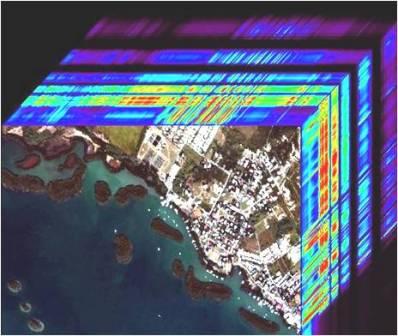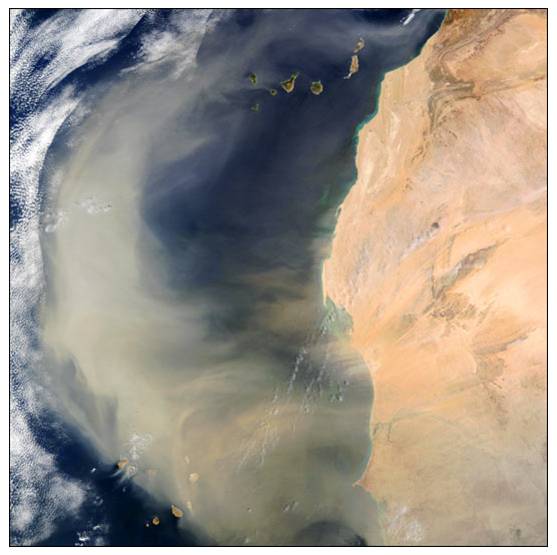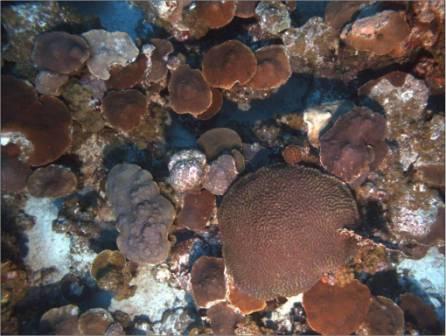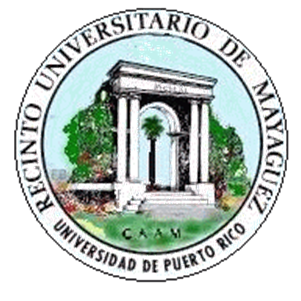 Some of the research being conducted at the Bio-optical Oceanography Laboratory of the University of Puerto Rico, Mayaguez Campus involves field measurements of apparent and inherent optical properties of the water column in both coastal and oceanic environments.
Some of the research being conducted at the Bio-optical Oceanography Laboratory of the University of Puerto Rico, Mayaguez Campus involves field measurements of apparent and inherent optical properties of the water column in both coastal and oceanic environments.
These optical measurements are carried out in support of research that can be divided into two thematic areas:
1) coral reef bio-optics and harmful algal blooms
2) validation of remote sensing data and algorithm development
 Aerosols are small particles (solid or liquid) suspended in the atmosphere with diameters 0.001 to 10 um. Some of these occur naturally, originating from volcanoes, dust storms, forest and grassland fires, living vegetation, and sea spray. Human activities, such as the burning of fossil fuels and the alteration of natural surface cover, also generate aerosols which account for about 10 percent of the total aerosols in our atmosphere.
Aerosols are small particles (solid or liquid) suspended in the atmosphere with diameters 0.001 to 10 um. Some of these occur naturally, originating from volcanoes, dust storms, forest and grassland fires, living vegetation, and sea spray. Human activities, such as the burning of fossil fuels and the alteration of natural surface cover, also generate aerosols which account for about 10 percent of the total aerosols in our atmosphere.
With funding from the NOAA Center for Atmospheric Sciences (NCAS), we are studying the impact of Saharan dust aerosols on the marine environment and public health. The attenuation of ultraviolet and visible radiation by Saharan dust is also being evaluated.
 Mesophotic reefs are zooxanthellate coral reefs usually found at depths of 30-100 meters. Mapping and monitoring of these reefs is necessary for selecting and protecting unique areas of high percentage of living coral cover, diversity, and structural complexity that could aid in the recovery of the shallower fish and benthic communities.
Mesophotic reefs are zooxanthellate coral reefs usually found at depths of 30-100 meters. Mapping and monitoring of these reefs is necessary for selecting and protecting unique areas of high percentage of living coral cover, diversity, and structural complexity that could aid in the recovery of the shallower fish and benthic communities.
Since 2002, we have collaborated with the Woods Hole Oceanographic Institute in the mapping of mesophotic reefs around the Puerto Rico-US Virgin Islands geological platform using the SeaBed Autonomous Underwater Vehicle (AUV). This platform provides high quality optical and acoustic data that are used to characterize and quantify the coral reef habitat present to depths of 100 meters or more, which for most areas of the world remains largely unknown.

 Isla Magueyes Field Station: Route 304, La Parguera , Lajas, Puerto Rico 00667
Isla Magueyes Field Station: Route 304, La Parguera , Lajas, Puerto Rico 00667
 Isla Magueyes Field Station: Route 304, La Parguera , Lajas, Puerto Rico 00667
Isla Magueyes Field Station: Route 304, La Parguera , Lajas, Puerto Rico 00667